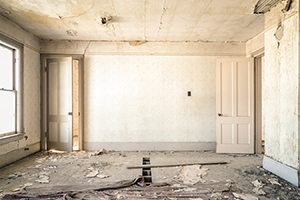
Sharp Slowdown Expected in Home Remodeling

The slowdown in real estate finance is manifesting itself in other ways, too: home remodeling is expected to drop off substantially over the next year, according to two reliable measures.
The Leading Indicator of Remodeling Activity, a quarterly forecast from the Remodeling Futures Program at the Joint Center for Housing Studies of Harvard University, Cambridge, Mass., projects year-over-year growth in homeowner remodeling and repair spending to shrink from 16.1 percent in 2022 to 6.5 percent by the third quarter 2023.
And The National Association of Home Builders Remodeling Market Index for the third quarter posted a 10-point year over year decline in the third quarter, falling to 77.
Carlos Martín, Project Director of the Remodeling Futures Program at the Joint Center, said annual gains in improvement and maintenance expenditures to owner-occupied homes are expected to decline sharply by the middle of next year.
“Housing and remodeling markets are undoubtedly slowing from the exceptionally high and unsustainable growth rates that followed in the wake of the pandemic-induced recession,” Martin said. “Spending for home improvements will continue to face headwinds from declining home sales, rising interest rates, and the increasing costs of contractor labor and building materials.”
“Although remodeling market gains are expected to cool significantly next year, homeowners still have record levels of home equity to support financing of renovations,” says Abbe Will, Associate Project Director of the Remodeling Futures Program. “Energy-efficiency retrofits incentivized by the Inflation Reduction Act of 2022, as well as disaster repairs and mitigation projects following Hurricane Ian will further support expansion of the home remodeling market to almost $450 billion in 2023.”
The NAHB/Westlake Royal RMI survey said it Current Conditions Index averaged 82, dropping eight points compared a year ago. All three components declined as well: the component measuring large remodeling projects ($50,000 or more) fell six points to 80, the component measuring moderately-sized remodeling projects (at least $20,000 but less than $50,000) dropped eight points to 83 and the component measuring small remodeling projects (under $20,000) declined by six points to 85.
Additionally, the Future Indicators Index fell 13 points to 71 from a year ago. The component measuring the current rate at which leads and inquiries are coming in dropped 17 points to 66 and the component measuring the backlog of remodeling jobs decreased by eight points to 77.
“Remodelers in many parts of the country remain positive about the market,” said NAHB Remodelers Chair Kurt Clason, a remodeler from Ossipee, N.H. “In some areas, however, a growing number are seeing signs of a slowdown due to the ongoing problems of labor shortages, high material prices and rising interest rates.”
“Home equity and ongoing strong demand for work at home and an aging housing stock are supporting demand for remodeling,” said NAHB Chief Economist Robert Dietz. “Interest rates are having a negative effect, more so on new construction than remodeling, so it’s not surprising that remodeler sentiment has so far managed to stay positive. After a decline in 2022, NAHB expects a small increase in remodeling activity in 2023, in contrast to the rate of new construction which we anticipate will continue to decline.”
